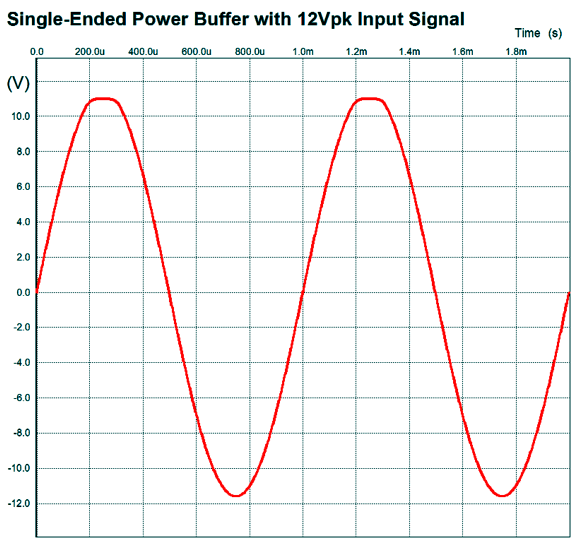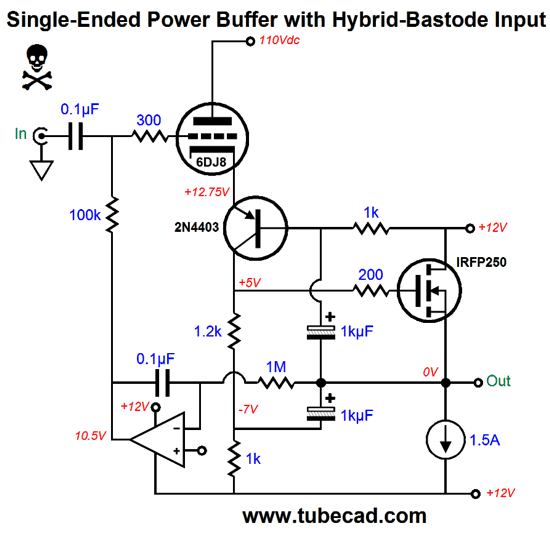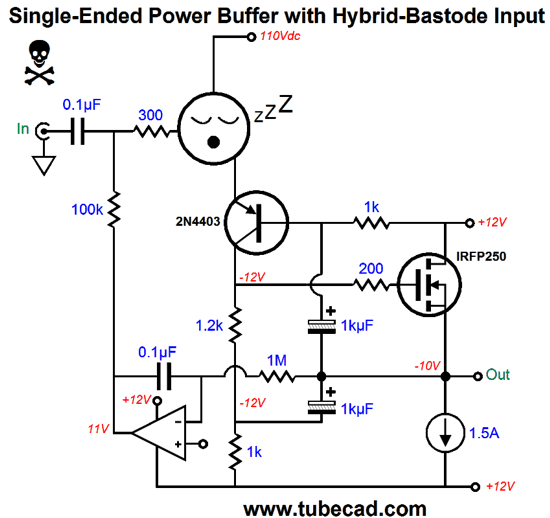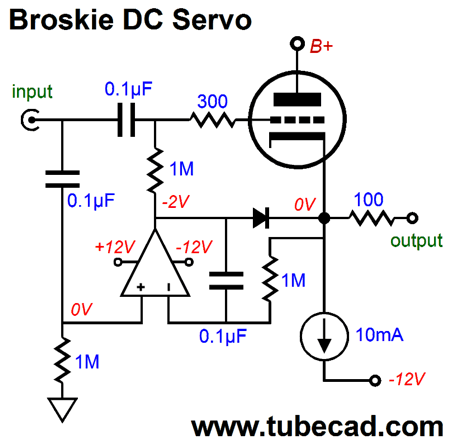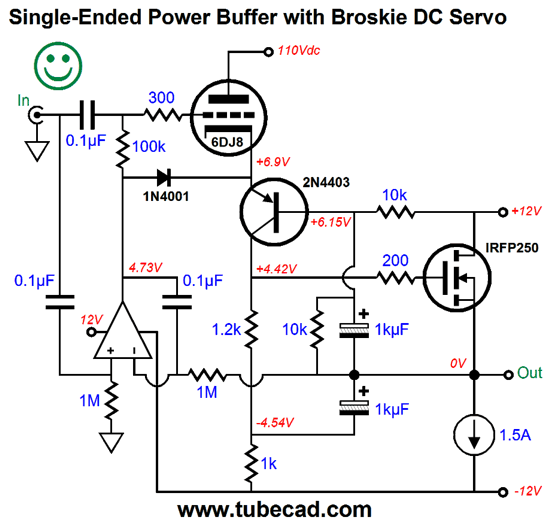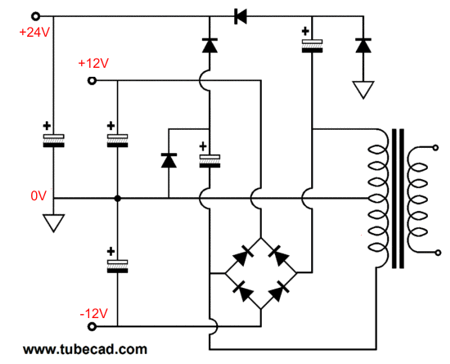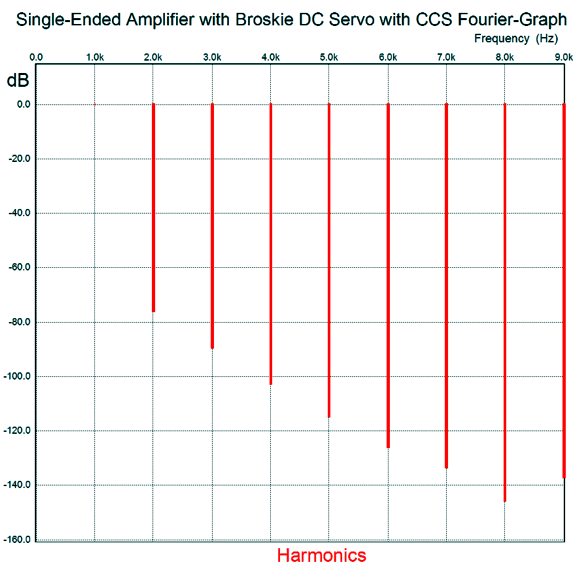| John Broskie's Guide to Tube Circuit Analysis & Design |
20 November 2016
Single-Ended Enthusiasm If I paid more attention to the DIY sites, I might be able to discern the hidden pattern inside seemingly random events. One pattern that I slowly came to see was that a lag of about one to two months exists between my posting and the email it provokes. Apparently, a mental digestion period of one to two months is needed.
Sledding Single-Ended Amplifiers
Ideally, in contrast, we would want something proactive, which would be anticipatory, acting before the stimulus.
For example, it would be great to know who will win the World Series before placing our bets. So, too, it would be great to know what demands will be made on an amplifier's output stage before they occur. Unfortunately, with live music—and LP playback counts as live due to unexpected pops and ticks—a reactive is the only possible approach, as no one knows what might happen. The singer might drop the microphone. The guitarist might snap a string hard against the fret board. (I have read about the nightmare of making jazz recordings in the 1950s and 1960s, as each performance was unique, an essential feature of jazz being improvisation.) In contrast, digital recordings hold no secrets, being a long enumeration of values, which could be printed in book form, albeit a thick book filled with long strings of ones and zeros. Even if a digital recording were made of an LP's playback, the ticks and pops would be cataloged along with the music. In other words, with digital playback, unlike live music feeds, is canned, something that can be repeatedly be accessed with no changes. Moreover, with digital audio playback, particularly server-based digital playback, we can sneak a peek at what lies ahead, which allows us to anticipate what is about to happen before it does. (Or we can read the data and hold and delay it in a 10 second buffer.) Why would this be desirable?
Just as the gambler would love to know the outcomes of races, fights, elections, and tournaments before they happen, a single-ended power amplifier would love to know how its idle current and B+ voltage needs to be before the output stage is required to produce the needed voltage and current swings into the loudspeaker. Proactive, not reactive. Anticipatory, not slowly responsive. If you haven't read my 126th post, do so, as it outlines the advantages and techniques of a sledding bias.
Did you follow the link? Probably not, so here is the quick overview of sledding bias: a class-A power amplifier, either single-ended or push-pull, would receive two signals; the first is the analog audio signal (the blue trace in the above illustration); the second is a smoothed out overlay signal of the positively rectified musical content (the red trace in the above illustration).
Sledding bias could be applied to push-pull output stages, but would particularly prove effective with constant-current source loaded single-ended output stage, as these are particularly inefficient, being at the most only 25% efficient, assuming perfect output devices and perfect constant-current sources—neither of which actually exist. Thus, real-world efficiency usually comes in at about 20% with solid-state devices and much lower with vacuum-state devices, such as 2A3, 300B, and KT88 tubes. (The maximum theoretical efficiency of an inductively loaded single-ended amplifier, whether choke-loaded or output transformer-coupled, is 50%; a resistively-loaded single-ended output stage, 12.5%.) Imagine a sledding-bias, constant-current source loaded, single-ended output stage that idled at 500mA and ran +/-8Vdc power-supply rail voltages. Such an output stage would dissipate 8W at idle and could deliver 1W into 8-ohm loads before current clipping. But with foreknowledge of what musical signal awaited us, the output stage could bump up its idle current and rail voltages to allow 50W of class-A, single-ended output. Big heatsinks and robust output devices would still be needed, as would thermal shut-off sensors. Why? Someone might want to test the amplifier's output power with continuous sinewaves, rather than with music. And some music might resemble a wave-generator's output, say some organ or synthesizer filled music. Nonetheless, most of the time the single-ended output stage would run much cooler than otherwise.
I love my car engine analogy from post 347, so I will quote myself:
Think about it, our car's engine does not run at a constant 5,000 RPM; instead, we vary the engine's rotations per minute based on what we need at the time—actually, we also vary the RPMs in anticipation of what we will need in a few seconds based on what we see up ahead. We see the traffic light turn yellow and we back off the RPMs. We see an opening develop ahead on the crowded freeway and we rev up the engine speed. Imagine a single-ended power that holds a DAC and accepts only a digital stream of data. The DAC imposes 10 second delay, while it maps out the upcoming demands the music will require, then it adjusts the B+ voltage and the idle current flow. Now, if the digital music file contained the overlay map, the amplifier would not need to impose a delay; in addition, the amplifier could warn us with a red LED when the volume level was too high to allow unclipped playback, as it would know what the upcoming peak signal would be. Implementing a voltage/current map in digital music files would not require a major overhaul of the existing file structure, as most music file formats allow the embedding of the cover art image. This cover image can hide the music-map information without us seeing it, as embedding invisible watermarks within a JPEG image is old hat; they are there and you don't see them. The big problem with the future is that it takes so long to arrive. Until that happy day arrives, we can use a sliding-bias technique instead.
Sliding-Bias Single-Ended Power Amplifiers
Because the output stage runs in strict class-A, we can easily set up an auto bias feature, which would prove extremely difficult with a class-AB output stage. The OpAmp strives to maintain the exact same voltage at its inverting and non-inverting inputs. Since the non-inverting input is at ground level, i.e. 0V, at idle, the output must establish 1V at the top of the inductor, so that the inverting input also rests at 0V at idle. Now, if the inductor were perfect, i.e. presented zero ohms of DCR, the output stage would melt, as a near infinite amount of current would be summoned. With a DCR of 0.5 ohms, however, we can expect a current flow of 1/0.5 amps (or 2A). Now, 2A against 14V equals 28W of heat dissipation at idle, which explains why four 200W/250V transistors were used. Each MJE21193 dissipates 7W at idle. This might sound insanely over cautious, as 200W/7W seems to equal 28.6 times overkill. It's not. The one big problem with all class-A amplifiers is heatsinks. Assuming an ambient temperature of 25C (77 Fahrenheit), a device insulator thermal resistance of 0.7 C/W, and a heatsink thermal resistance of 1.25 C/W per channel, the heatsink temperature at idle will be about 60C, which is plenty hot. The all important junction temperature will be 72C, which is less than half of the transistor's 150C limit. In other words, a big heatsink is needed, even with the tiny 15V B+ voltage. If you long for a 300W single-ended power amplifier, then expect to need a dedicated outside air-conditioner condenser to actively cool the output stage.
Note how two thermal limits obtain. Imagine that you are pulled over by the police and told that you had exceeded the speed limit. You are confused and you explain that you couldn't have been, as your car's RPM redline is 6,000 and you were only hitting 5,000 RPM. You will still deserve and get the ticket. In much the same way, power amplifiers present two thermal limits, with the first being the all important thermal-junction limit; exceed it and the devices melt. The second is the heatsink temperature; exceed 60C and your skin sticks to the burning hot heatsink. Not good. (Actually, 60C equals 140 Fahrenheit, which is briefly touchable, although unpleasant.) Thus, you can see the appeal of a sliding bias, as less heat is dissipated at idle and during quiet passages. Converting the above amplifier to accept a sliding bias requires only two extra parts: a resistor and a diode.
When the output swings positively, nothing happens to the existing nominal idle current. When the output swings more than -3.4Vpk, the 1N4148 signal diode engages and the 0.68µF charges up more, which causes the idle current to bump up. The critical part is the added resistor labeled R, as we want to impose a maximum idle current flow of about 2A. Finding the optimal value is best left to trial and error with reality of the virtual reality of SPICE simulations, as I am not sure what the 1N4148's forward voltage drop would be in this circuit. By the way, this single-ended amplifier should be able to swing +/-12Vpk into 8-ohm loads, which translates into 9W of output power. The 1kµF coupling capacitor might prove too small in value, a safer value would be 3kµF. By the way, the capacitor show in the schematic is a monopolar electrolytic type, which I have found sound much better than their polarized brothers. Speaking of coupling capacitors, a 9W could thunder coupled with horn loudspeakers. But another load might be a midrange or tweeter in a bi-ampped system. Modern class-D amplifiers sound pretty good up to about 3kHz, so using a 300W class-D amplifier on the woofer and a 9W class-A, single-ended amplifier on the tweeter might make for sonic glory. In such a setup, the class-A amplifier would see an active crossover with a 3kHz crossover frequency. I would then use 68µF quality film capacitor at the class-A amplifier's output, as it would impose a 300Hz high-pass filter. Why bother when the active crossover might implement a fourth-order high-pass slope? The answer is hum and pops and burnt-out tweeters. Sure, as long as everything is going well, the tweeter will be safe. If, on the other hand, you lose a ground connection at the RCA jack or you discharge the static electricity that your leather soled shoes created across the nylon carpet into the volume control and the amplifier makes a huge pop and the tweeter burns up. Well, with the 68µF capacitor damage is less likely to occur.
One topology that has always interested me is the following, which I unveiled in post 125. (Definitely, check this post out, as it is filled with single-ended power buffers.)
It looks something like a White cathode follower but with a twist. The twist is that the triode does very little direct driving of the speaker, as its current conduction varies little. Think about it, the MOSFET only requires a small input signal to swing huge current-flow variations. And it only takes a small change in the triode's current flow to produce a big output signal at its plate, as just 1mA current variation against 5k equals 5V of plate swing, which against the MOSFET's 10A/V transconductance would result in 50A of current swing. To hammer this point even harder, let's replace the 5k plate resistor with a constant-current source.
I have made more than just one part swap, as the triode is now a 12B4, whereas the previous (unmarked) triode was a 6DJ8. Moreover, the output stage idle current is lower as is its B+ voltage. Nonetheless, the key point is that although the triode is idling at a hot 30mA, the triode must draw a constant current, so it is effectively in parallel with the 1.5A constant-current source and the output stage functions in a single-ended fashion, as only the MOSFET sees a varying current flow. The reason I made the tube change was that I wanted to eliminate the input coupling capacitor and the 12B4 is one of the few small triodes that would work with its grid being 12 volts more negative than its cathode. The circuit gives the triode control over the N-channel MOSFET. If a positive pulse were forced upon the output, the triode's cathode voltage would rise, which would cause it's plate voltage to rise by mu (amplification factor) times the pulse's amplitude, which in turn would cause the MOSFET to greatly increase its current draw, which would work to pull the output back in place. By adding a PNP transistor, we can create a bastode stage (a vertical differential amplifier), so a P-channel MOSFET could be used instead.
The 12B4 still controls the MOSFET, but it does so through the 2N4403 transistor. Once again, an unwanted positive pulse appearing at the output would prompt the triode to conduct less current, which would cause the MOSFET's gate voltage to swing negatively, forcing a greater current flow through the MOSFET, pulling the output down, thereby countering the positive pulse. We can replace the 1.5A constant-current source with an inductor, which almost doubles the buffers efficiency, as the constant current source dissipated 18W at idle, whereas the inductor only dissipates 0.675W at idle.
If we wish to use another triode, we should reintroduce the input coupling capacitor.
Note how the 6DJ8's cathode is a little over 2V more positive than its grid. Also note how the bastode input stage's constant-current-source load has been replaced by a capacitor-bootstrapped 1k resistor. Why? In SPICE simulations, the constant-current source would have worked flawlessly; real constant-current sources, however, do not fare so well in actual amplifiers. Think about it: a real constant-current source, say one based on the LM334 or discrete transistors or FETs, can never allow the MOSFET's gate to see any voltage below 0V. The capacitor-bootstrapped 1k resistor, in contrast, can. I wondered if the same approach could be applied to the 6DJ8's plate, as shown below.
In SPICE simulations, not much changed, alas. My next thought was, Why not try an inductor load?
I should have placed an unhappy face icon on the schematic, as it holds a serious flaw—namely, at startup, when the triode is cold and not conducting (or when the triode is missing from its socket), the P-channel MOSSFET's source slams down to a few volts above ground potential. Not good, as the inductor's 0.3-ohm DCR must induce a huge current flow, say about 25A! The workaround requires that the MOSFET starts off turned off and only begins to conduct after the triode begins to conduct. We must invert the output stage, so the P-channel MOSFET gets replaced with an N-channel MOSFET and the inductor goes below the MOSFET.
I decided to go hunt for actual inductors and I found the Hammond 159ZE which presents a DCR of 0.43 ohms and offers an inductance of 28mH. Yes, millihenries, not henries. With the 12V power supply for the MOSFET, all we can reasonably expect is an 8Vpk output swing into 8-ohms, which translates into 4W, and which required an 8.3Vpk input signal. In SPICE simulations the distortion came in about 0.1%, as shown below.
Not bad at all. The output impedance is about 0.05 ohms. A super important aspect of an amplifier's (or buffer's) performance is its clipping behavior. Some output stages go crazy when they clip and the ear complains. Tube gear usually runs so little or even no negative feedback that its clipping is much more rounded and less grating to the ear. In other words, I worried that the bastode differential input stage might lose its mind during clipping. I shouldn't have worried, as the following graph shows.
Even with the truncated tops, the distortion is less than 1% and no sharp edges stick out. Nice.
Single-Ended Power Buffer with Bipolar Power supply Everything looks great, but what happens if the tube is not i its socket or its heater has opened up or the tube is just cold and not yet conducting. Not good.
The constant-current source pulls the output down to its voltage limit, say -10V, and your woofers catch on fire. The only workaround that I could come up with was to use my Broskie DC servo loop configuration.
The OpAmp's non-inverting input is not directly grounded, as the path to ground must travel through the 1M resistor. In addition, the input signal is presented to the OpAmp's non-inverting input, causing the OpAmp's output to follow the input signal, which allows the cathode follower's output to swing make much bigger voltage swings. Plugging the Broskie DC servo into the buffer is easy enough.
Note the shunting of the top 1kµF capacitor with a 10K resistor and the replacement of the 1k base resistor by a 10K resistor, as it lowers the 2N4403's base voltage to +6.15V. I assumed that the OpAmp's positive rail voltage had to be greater than 12V, as the OpAmp's output must be able to swing high enough to engage the diode and the OpAmp's output is already sitting at +4.73V at idle. As the music signal swings up, so too must the OpAmp's output voltage. Running three power-supply rail voltages is not a big deal, as the following schematic makes clear.
I had to run some SPICE simulations of the above circuit and I was quite pleased to discover that a higher power-supply rail voltage for the OpAmp didn't seem to be needed, as the 12V positive rail voltage only resulted in a small negative DC offset after running full output for long periods of time, which then faded away. Of course, the real test is reality. But right now, I am putting my bets on the 12V positive rail voltage for the OpAmp being sufficient. Here is the Fourier graph for 1W output into 8-ohms at 1kHz.
Lovely, just lovely. At 4W, the results were almost as fine. Okay, I must stop here, as I can and I, in fact, planned on going on much longer. Part two will follow next time.
Special Thanks
//JRB
User Guides for GlassWare Software Since I am still getting e-mail asking how to buy these GlassWare software programs:
For those of you who still have old computers running Windows XP (32-bit) or any other Windows 32-bit OS, I have setup the download availability of my old old standards: Tube CAD, SE Amp CAD, and Audio Gadgets. The downloads are at the GlassWare-Yahoo store and the price is only $9.95 for each program. http://glass-ware.stores.yahoo.net/adsoffromgla.html So many have asked that I had to do it. WARNING: THESE THREE PROGRAMS WILL NOT RUN UNDER VISTA 64-Bit or WINDOWS 7 & 8 or any other 64-bit OS. One day, I do plan on remaking all of these programs into 64-bit versions, but it will be a huge ordeal, as programming requires vast chunks of noise-free time, something very rare with children running about. Ideally, I would love to come out with versions that run on iPads and Android-OS tablets.
//JRB |
Kit User Guide PDFs
And
High-quality, double-sided, extra thick, 2-oz traces, plated-through holes, dual sets of resistor pads and pads for two coupling capacitors. Stereo and mono, octal and 9-pin printed circuit boards available.
Designed by John Broskie & Made in USA Aikido PCBs for as little as $24 http://glass-ware.stores.yahoo.net/
The Tube CAD Journal's first companion program, TCJ Filter Design lets you design a filter or crossover (passive, OpAmp or tube) without having to check out thick textbooks from the library and without having to breakout the scientific calculator. This program's goal is to provide a quick and easy display not only of the frequency response, but also of the resistor and capacitor values for a passive and active filters and crossovers. TCJ Filter Design is easy to use, but not lightweight, holding over 60 different filter topologies and up to four filter alignments: While the program's main concern is active filters, solid-state and tube, it also does passive filters. In fact, it can be used to calculate passive crossovers for use with speakers by entering 8 ohms as the terminating resistance. Click on the image below to see the full screen capture. Tube crossovers are a major part of this program; both buffered and un-buffered tube based filters along with mono-polar and bipolar power supply topologies are covered. Available on a CD-ROM and a downloadable version (4 Megabytes). |
||||||||||||||||||||||||||||||||||||||||||||||||||||||||
| www.tubecad.com Copyright © 1999-2016 GlassWare All Rights Reserved |





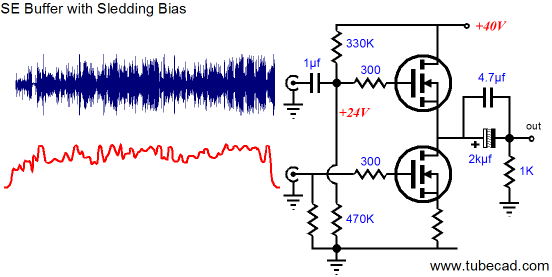

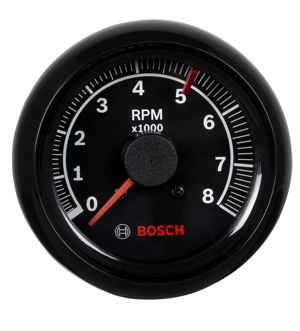
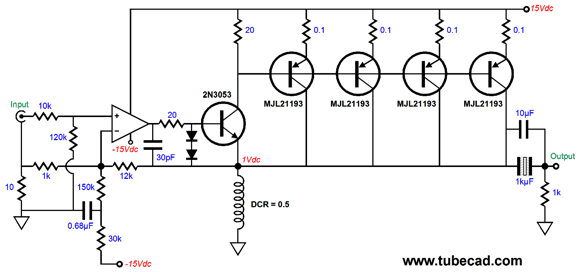
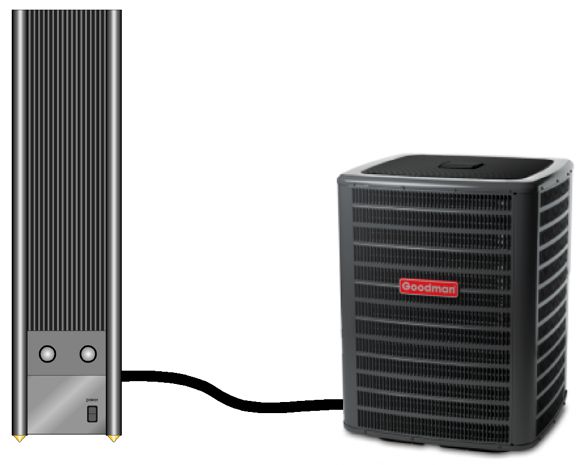
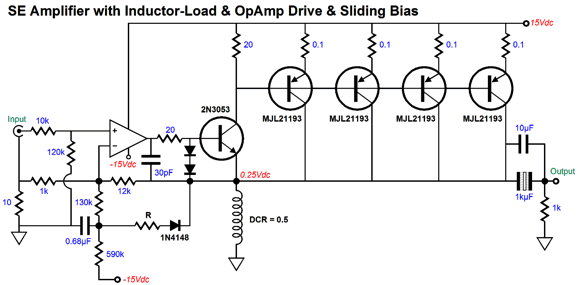
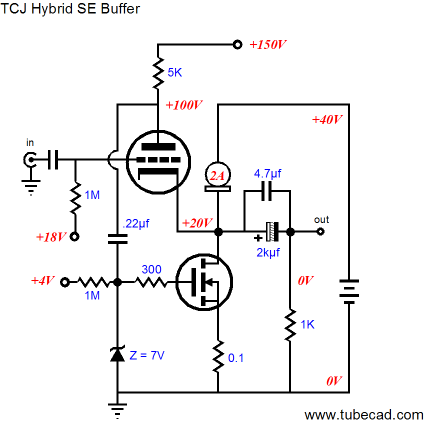
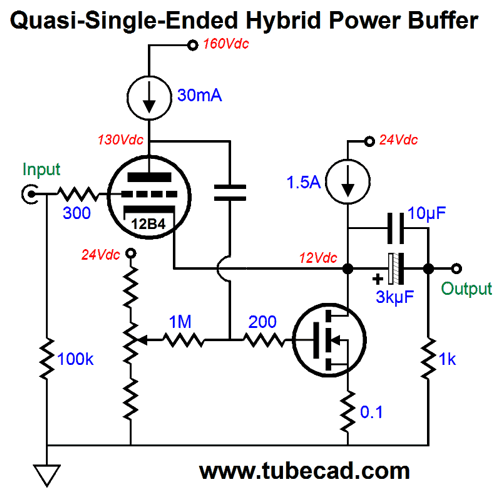
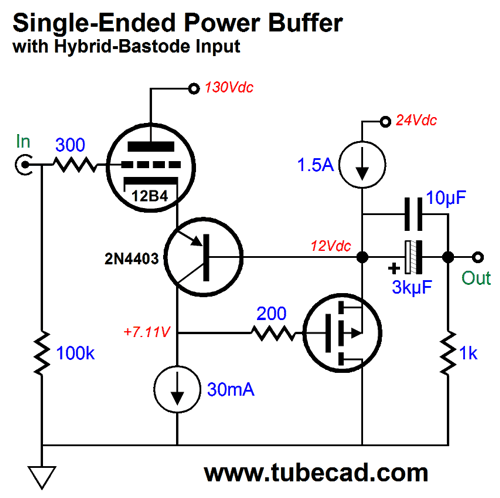
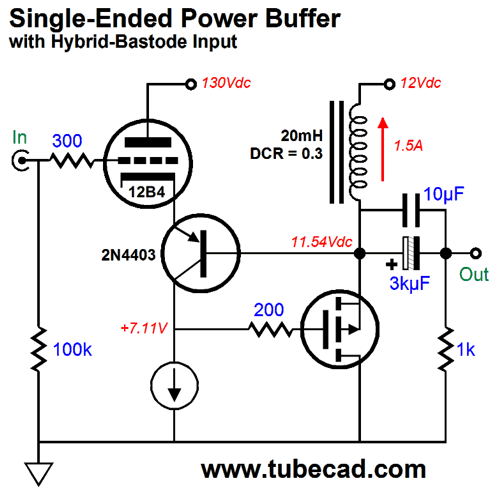
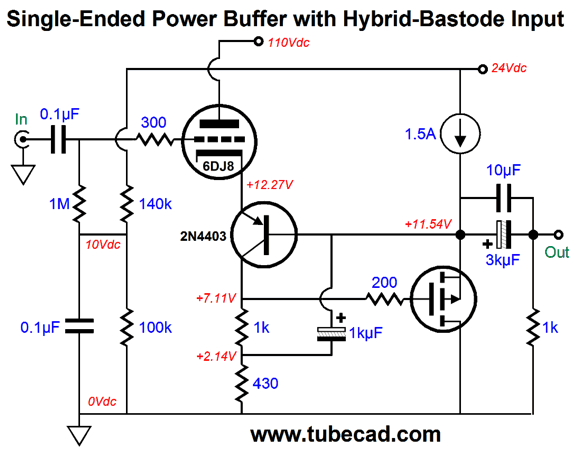
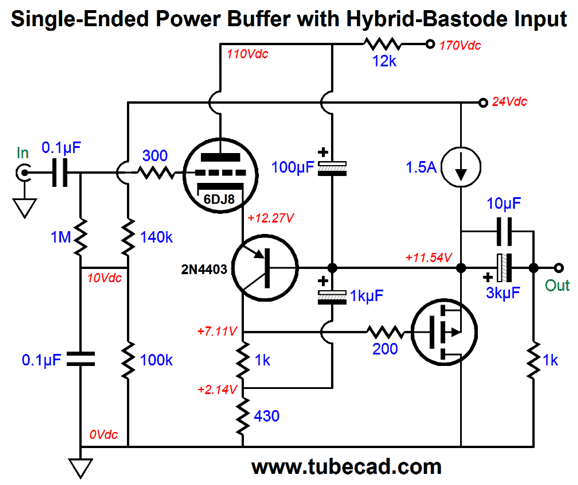

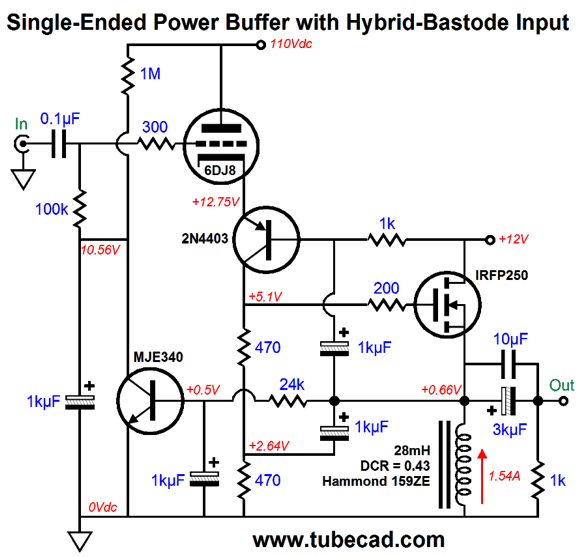
%20Fourier.png)
